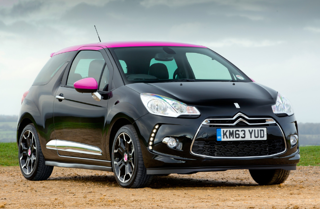This question becomes more complex to answer when foreign drivers are employed. Catherine Chetwynd reports.
Whether employees are safe and legal to drive is a key question that all fleet managers must be able to answer.
But it takes on a new level of complexity if an employee has a foreign driving licence and has never driven on UK roads.
The road networks and traffic volumes can be confusing, possibly daunting, to a driver new to the country.
Someone used to driving in Paris might not be thrown by having to find their way around a major UK city, but someone who passed their test in a rural environment, where there is little congestion, might find the quantity and aggression of London traffic, for example, quite a shock.
Malcolm Maycock, managing director of licence checking company Licence Bureau, says: “We drive on the ‘wrong side’, have extremely congested roads and have very difficult, cluttered signage.”
Roundabouts are a particular challenge. John Davidge, fleet risk management consultant to RAC Risk Management, says: “Some countries do not have any and in a lot of places, they are effectively one-lane wide crossroads.
“Here we have roundabouts with a number of lanes and exits, mini-roundabouts and multiple mini-roundabouts – and enough UK drivers get confused by those.”
Zebra, pelican and toucan pedestrian crossings, and box junctions can also be added to the list of challenges for foreign drivers.
But it’s not just about whether a foreign driver is able to handle situations on UK roads – are they legal to drive here in the first place?
Check foreign drivers’ licences
The first step to managing a foreign driver is to check their driving licence. There may only be 28 members of the EU, but when recruiting from outside the UK, an employer could be confronted with one of more than 130 versions of EU driving licences. And then there’s the rest of the world.
Lack of standardisation means there are not only several formats of licence – card, paper, card and paper – but numerous categories to fathom as well, and these do not conform to those of the DVLA.
Licences fall into four groups:
- Northern Ireland licence holders may drive in the UK until their licence expires.
- People with a licence from the EU or EEA may drive in Great Britain on their full, valid driving licence until they are 70 or for three years after becoming resident in Great Britain, whichever is the longer.
- Those from a designated country – there are 16, ranging from Andorra to Zimbabwe – may drive in Great Britain on a full, valid driving licence for 12 months from becoming resident, when they have to exchange their licence for a British one. They have five years during which they can do that, but after that period they need to take a UK driving test.
- Drivers from all others countries can drive in Great Britain on their full licence for 12 months from residency by which time they must have passed the British test, so it is worth applying for a provisional licence when they arrive in the country.
There is a European model driving licence, but just as UK drivers are not obliged to change their paper licence for a paper and card version, EU drivers do not have to update theirs. A useful book to help identify EU licences is on the YouScribe website, which can be found at bit.ly/1qHkV7T.
All drivers in the UK are subject to UK law, regardless of the origin of their licence and DVLA records the convictions of all drivers who have committed offences within Great Britain and DVLNI for Northern Ireland.
However, checking foreign licences can be difficult. Whereas companies can check UK driving licences direct with DVLA (with the driver’s consent), there is no such central database for non-UK documents.
There are, however, several things organisations can do to ensure their drivers are safe and legal, and to protect themselves.
Having ascertained the type of licence the driver needs – small vehicle (car/motorbike) or lorry/bus – ask to see their licence.
“View the original licence and copy it,” says Maycock. “Do not accept a copy; in Germany, if you are disqualified, the licence is taken from you.
“When you are taking a copy, ensure you both sign and date it to confirm it is a true copy.
“If the driver does not speak or understand English, provide a licence declaration written in the driver’s native language.”
Check that the document is in date and valid: if it is not valid in the country of origin, it is not valid here. It is also worth investigating with the DVLA whether the driver is disqualified in the UK.
“We treat foreign drivers the same as UK drivers,” says Maycock. “We get consent to access their record at DVLA.”
If it proves impossible to verify any of the above, there is a strong argument for not employing the individual concerned.
“Employers should ask prospective employees about their driving history and experience. Questioning should go way above what you would normally ask an employee with a UK licence,” says John Webb, principal consultant for Lex Autolease.
“It is all about managing risk and there is no reason why a company should not refuse that person employment, if they were not able to provide assurance that risk can be controlled.
“Employers still have a duty of care for those people and businesses are very exposed.”
Davidge warns: “If a driver has a French licence, that would normally count as EU and therefore be valid across the EU. But if they passed their driving test in Morocco and changed the licence to a French one, then it is no longer a true EU licence.”
Organisations could make it a condition of employment that drivers prove they are eligible to drive in the UK or hold a UK driving licence.
The legality of the driver is a crucial matter when things go smoothly, but in the event of an accident, the stakes are particularly high: if the driver proves to be ineligible, their employer could be liable.
If it involved a fatality, the company could be prosecuted under the Corporate Manslaughter and Corporate Homicide Act.
An essential back-up to these checks is good data capture processes and management, says Helen Hudson, licence check manager at Interactive Driving Systems (IDS).
“The starting point is to know where their licence is from and then to capture the data around how long they are in the country and when they need to transfer to a UK licence, so that employers can manage alerts relating to what is required,” she says.
IDS advises that applicants who drive complete a detailed application form and provide written and verbal references, medical certificates, proof of annual eyesight tests, details of licences held, are risk assessed and provide details of collisions, traffic infringements (or sign a DVLA mandate) and insurance refusals during the past three years.
If there is any doubt as to the importance of this, figures on UK licences in the AA DriveTech fleet risk management document Driving For Work are compelling: “Our experience shows one in 650 drivers checked are driving while disqualified and one in 300 have a revoked or expiring licence. In addition, as many as one in 16 drivers will have an expired, or expiring, photocard.”





















Login to comment
Comments
No comments have been made yet.